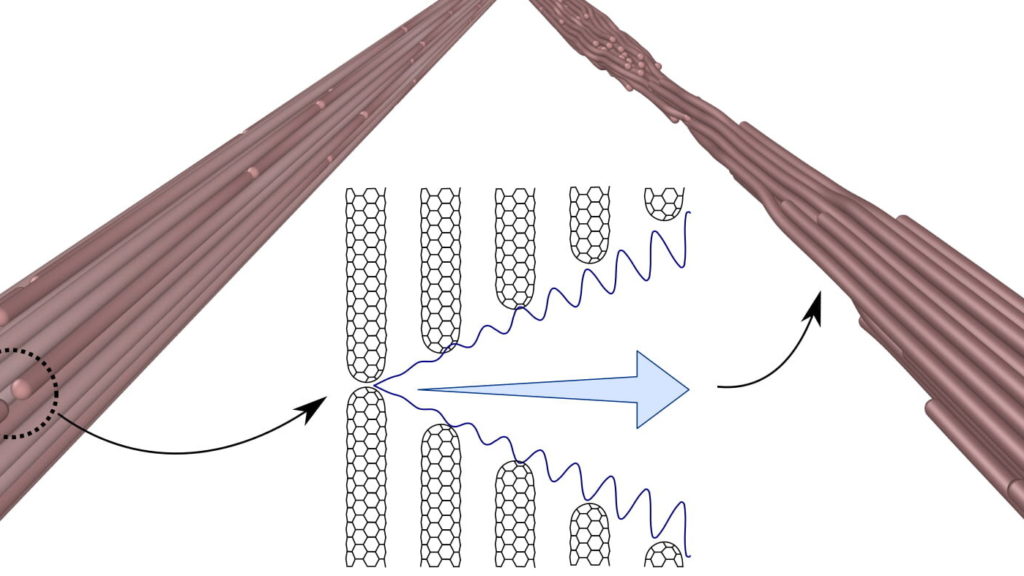A Rice University study calculates how strains and stresses affect both “perfect” nanotubes and those assembled into fibers and found that while fibers under cyclic loads can fail over time, the tubes themselves may remain perfect.
They hope to give researchers and industry a way to predict how long nanotube fibers or other assemblies can be expected to last under given conditions.
“The time-dependence of an individual nanotube’s strength or endurance was studied long ago in our group, and now we’re contemplating its implications in the case of cyclic loading of the tubes and their fibers, or assemblies in general,” Penev said.
Perfect carbon nanotubes, considered one of the strongest structures in nature, tend to remain so unless some dramatic impact takes advantage of their brittle nature and cracks them into pieces.
But when millions of nanotubes are bundled into threadlike fibers or other configurations, the van der Waals force that binds the parallel nanotubes to each other doesn’t prevent slippage.
Every time a nanotube fiber is stretched or strained, it will mostly recover its original form once the tension is released.
“The cyclic loading of nanotube fiber causes neighboring tubes to either slip away or toward each other, depending on which part of the cycle they are in,” Gupta explained.
“As we know, some of the best nanotube fiber production strategies can lead to a tensile strength higher than 10 gigapascals , which is incredible for their application in everyday life,” Gupta said.
